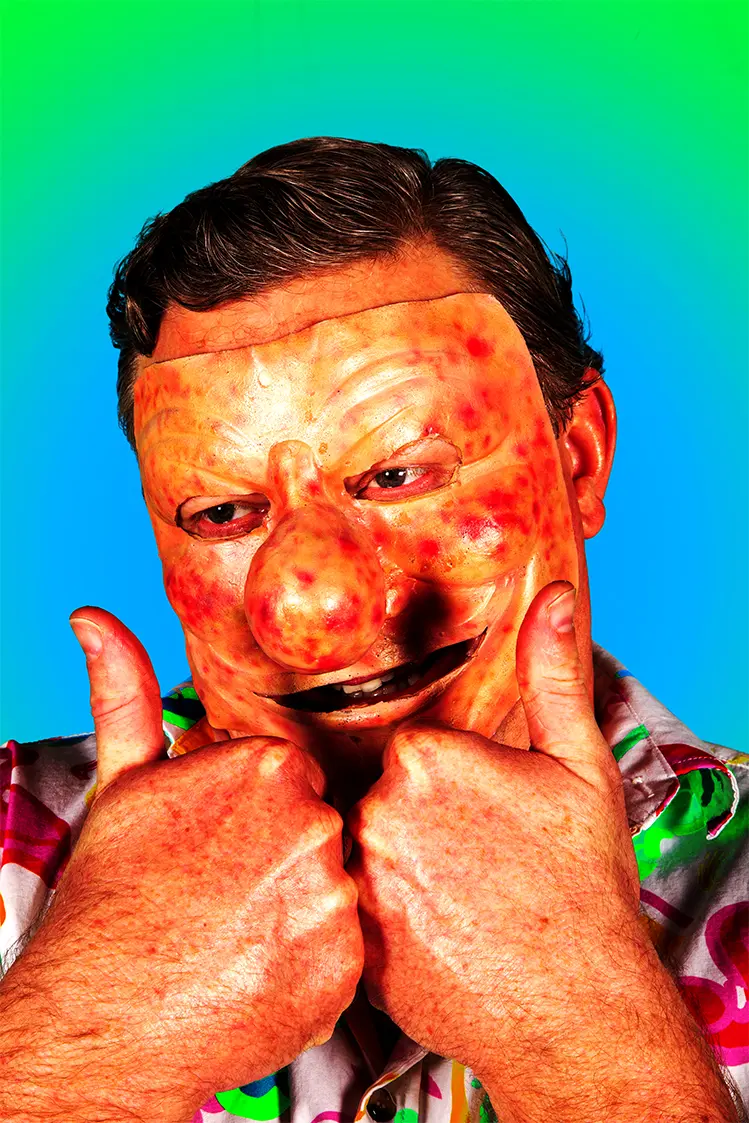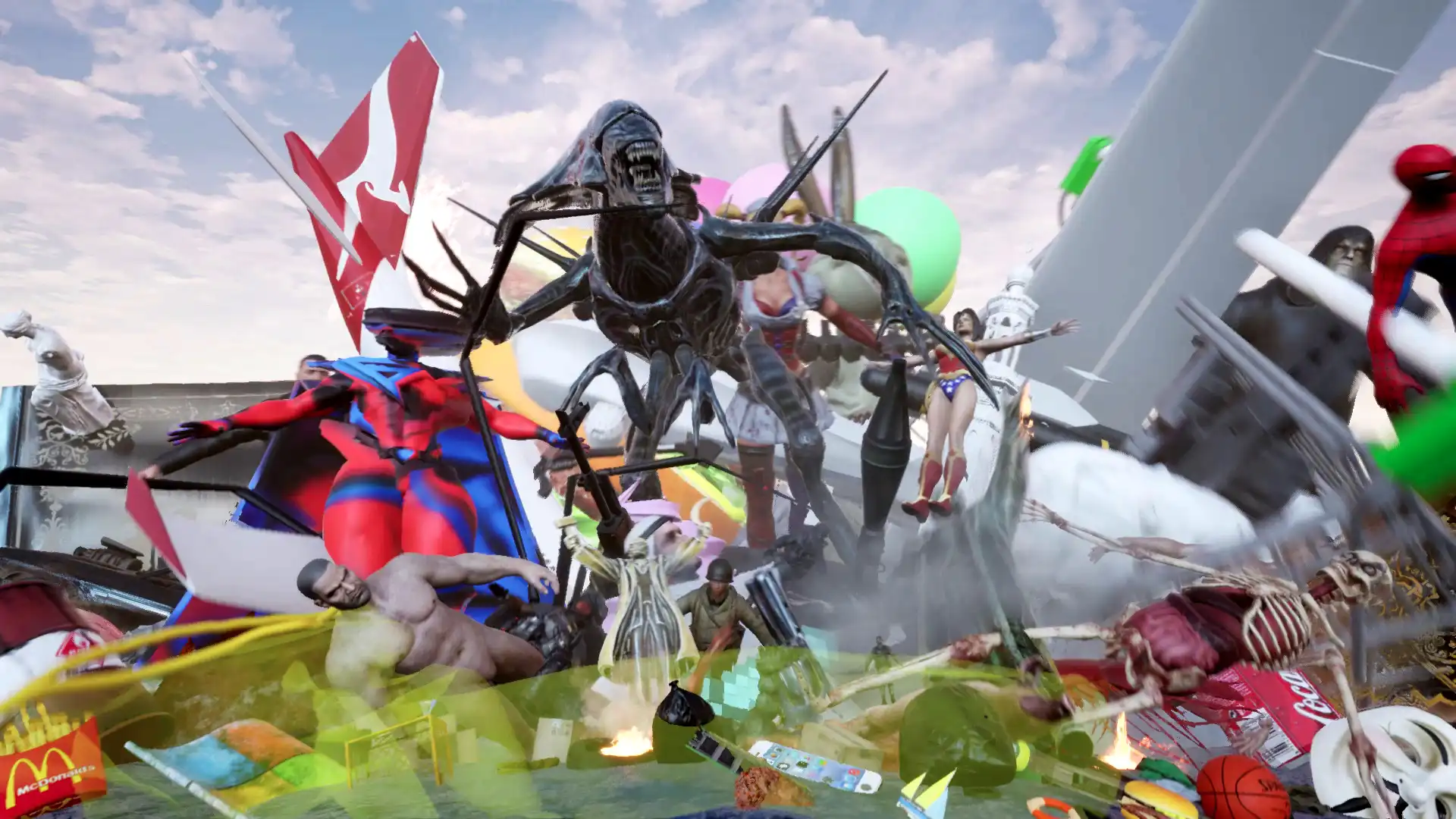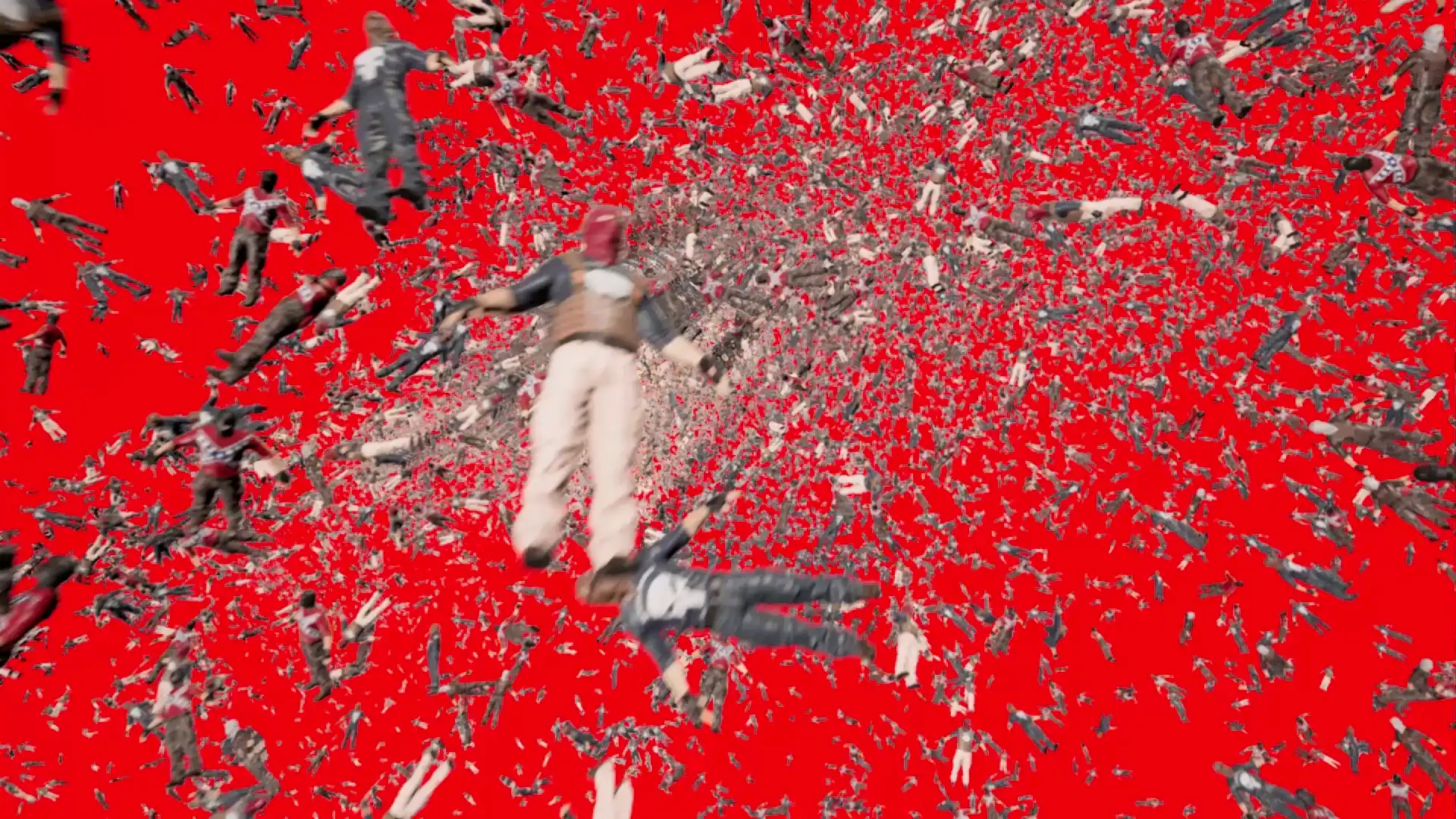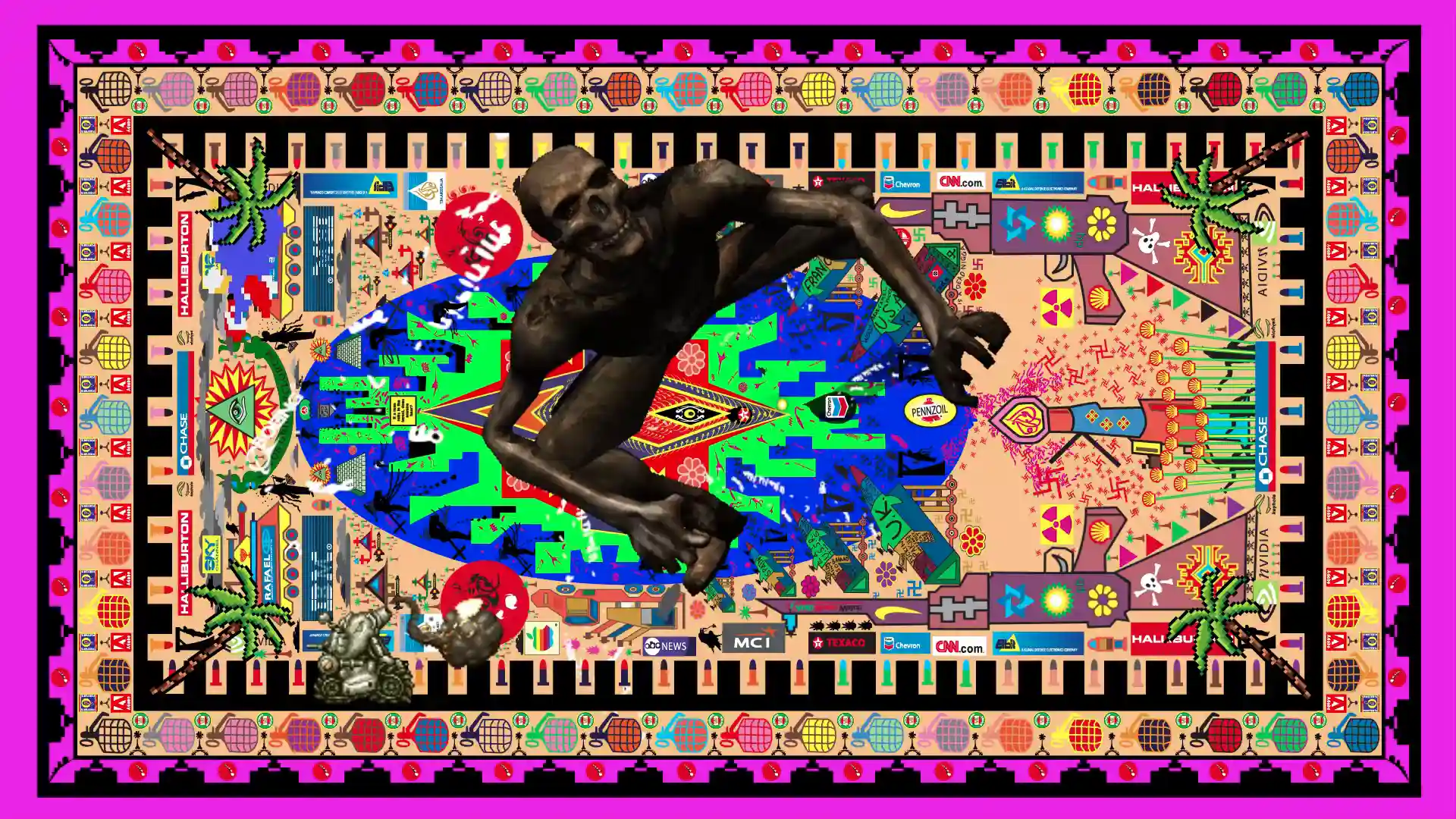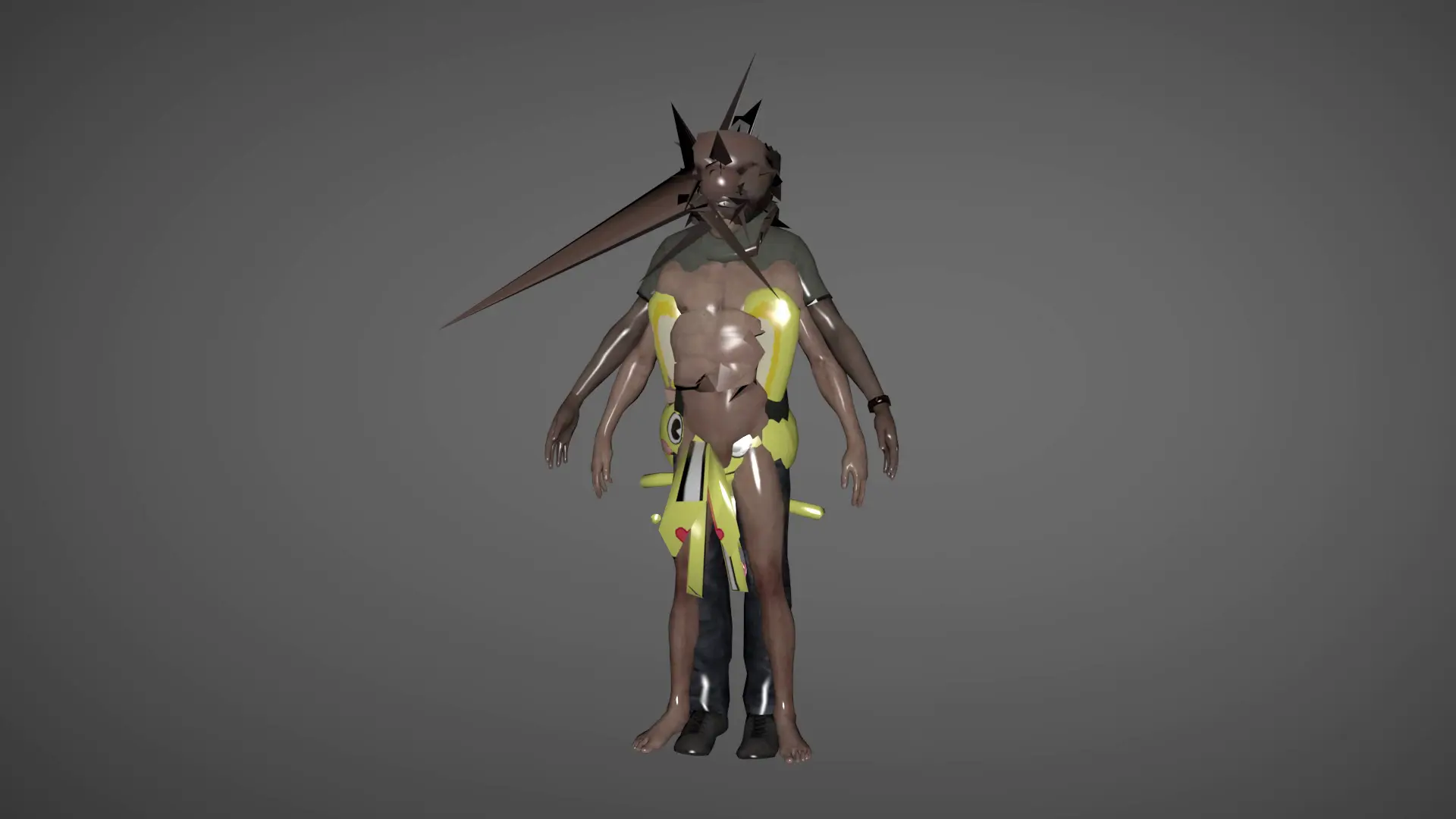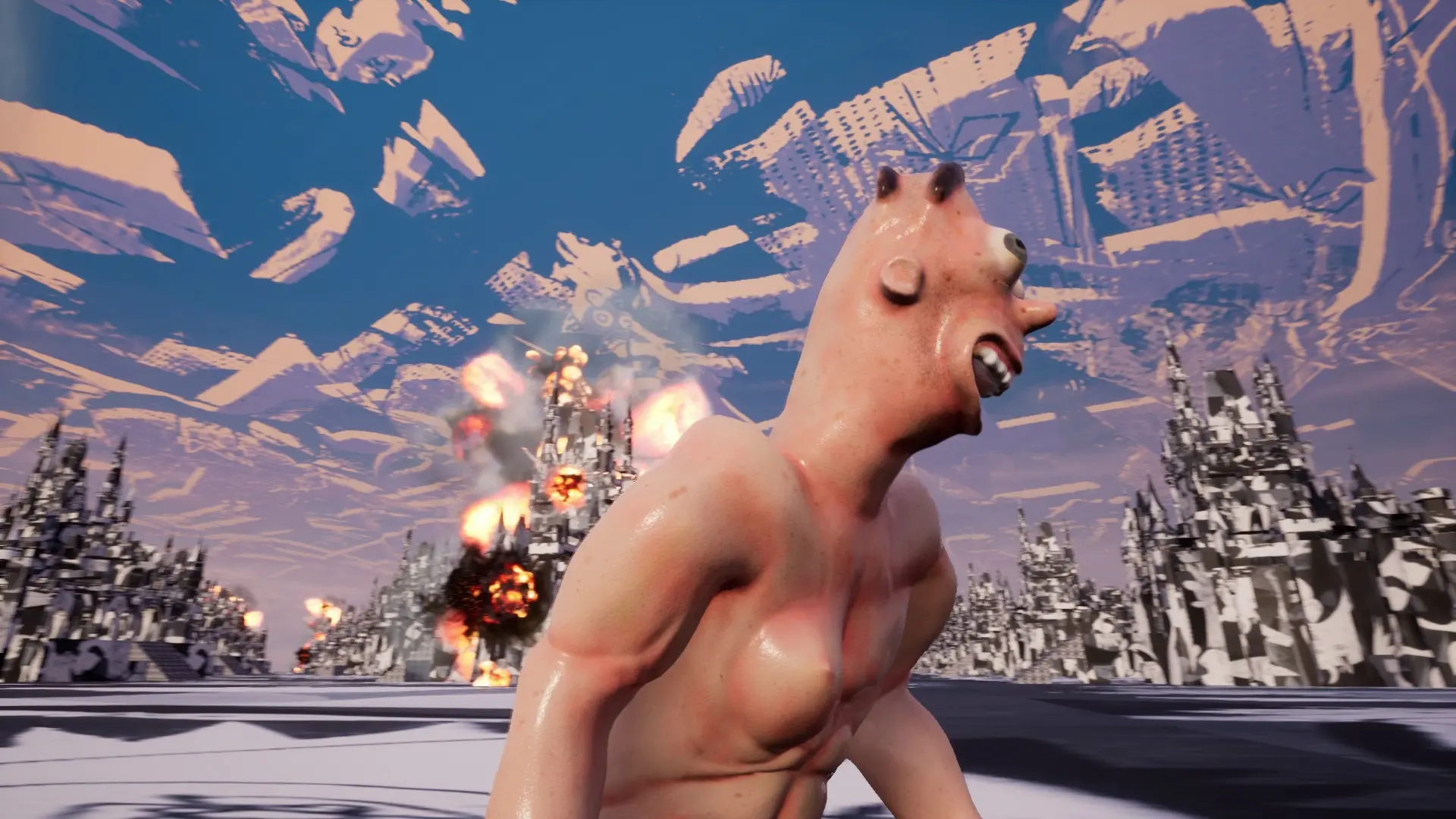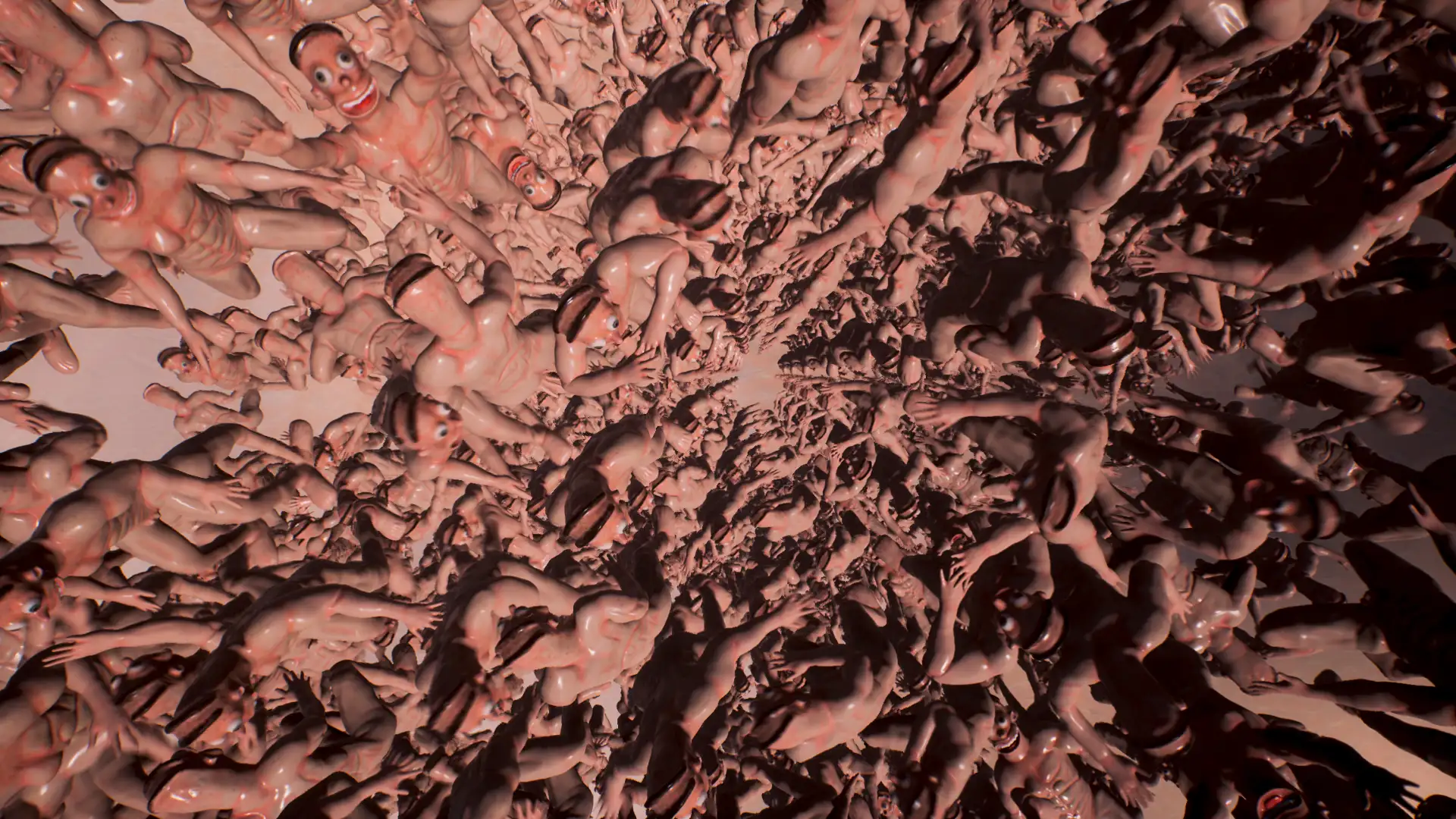New Statements, The Block, QUT, 2016-19





















above: New Statements, 2016-19, digital video, video projections, interactive game, routed text on ply, acrylic and epoxy resin, polyurethane, oil paint, forton plaster, fibre-glass resin, fabric, aluminium, and curved steel, The Block, QUT, Brisbane, Australia.
Description
New Statements was a new media exhibition that showcased an installation of interactive, screen-based Machinima and sculptural works developed from 2016-19. This PhD practice–led research project explored the operations of a ‘techno-stice’ that demonstrated digital technology’s capacity to generate dissensual space in the form of new subjectivities and ethico-political perspectives in contemporary art.
Abstract
Jacques Rancière’s concept of dissensus can be understood as an activity or process that modifies or reorders the consensual operations of social, cultural, and economic orders. The sensible is his concept of the common spaces and sites we occupy. Dissensus creatively reimagines the possibilities for subjectivisation outside of discipline specific entities and socio-political boundaries. The possibilities for contemporary art to enact this have been recently addressed through relational and socially engaged practices, but these have overlooked the potential of hybrid digital forms like Machinima to act as exemplary sites for dissensus.
Rancière’s idea of dissensus will be reimagined in my digital art practice in light of art critic Nicolas Bourriaud’s concept of the ‘social interstice’, a site where technology and contemporary art intersect to form transformative interstitial space in the digital media sphere.
This practice-led project aimed to research this gap in knowledge and practice creatively and critically in order to develop new models for thinking about the political possibilities of digital creative forms. It created multiple interactive Machinima art works that explored and expanded ideas about authorial space and human agency. The project aimed to develop an original practice-led methodology that represented a synthesis of technology and the ‘social interstice’ in contemporary cultural forms. Accordingly, the project’s creative and critical outcomes related to a ‘techno-stice’, which formed a unique contribution to digital and interdisciplinary research culture. My practice-led project also sought to demonstrate contemporary art’s contribution to the creation of dissensual space, and new ethical perspectives in the digital realm.
Works
Machinima is the backdrop that makes up a series of investigations which generate alternate ways of perceiving representations that have been established by the dominate social reality. These works encourage the possibilities for dissensus to be enacted in the gallery either through an engagement with a socio-political landscape, channelled via semiotic means that could be read in my post-production techniques and actions, or were explored through the combination of the spectatorial with the participatory (interactivity) which created the discussion around the technostice. Although dissensus is never a guarantee in any artwork that tries to combine politics with aesthetics, it was the aim of this project to understand how machinima today could be utilised to explore the politicisation of the medium first established in the nineties. A number of seminal works are listed below:
Tutorialized I-II, 2016-19 (Digital Video)
1-channel synched, HD video (16:9), Stereo, PAL. 20:10mins.
In Tutorialized I-II I reconfigured a series of 3D forms to generate an analysis of their constructed purpose. The montage contains the literal construction of a digital image with its potential real world repercussions observed momentarily as the backdrop. If reading and deciphering symbols in art is an action, then these actions also have the potential to turn into a political act. For instance, I wanted to exploit the uncertainty of real and imagined threat: Who is in control of the gun? Who is it searching for or targeting? Am I the perpetrator of violence or the potential victim? I also tried to approach them antagonistically, either through modifying their shapes, textures, and movements, by pulling and twisting their digital bodies into violent, contorted, or explosive projections, scaling them up, and using their distortions to penetrate each other.
The soundtracks are ripped from online tutorials that I have either participated in or have depended on for my own development as a creator. Sometimes it is my voice distorted by a vocoder or the voice of the uploader. I see online tutorials as a type of cultural programming that I utilise to, disrupt and expand the viewers relationship to the ideology behind videogames and consumerism. Interactivity or participation is not just the literal interfacing with a piece of technology such as a mouse, joystick, or button, but a physic entanglement with reading, feeling, and being affected by the power of the image. These antagonistic experiments over the course of the project were meant to re-intensify our experience of their everyday acceptance and lead to questions that speak to their larger interconnected significance within a wider socio-political discourse.
Ocean Sequences, 2016-19, (Digital Video)
3-channel synched, HD video (16:9), Stereo, PAL. Duration: 7:12mins
Ocean Sequences is a mashup of objects that attract and repel one-another in unpleasant ways. An infinite ocean backdrop sets the stage for these forms which compete for dominance in a claustrophobic space of their own making. As forms penetrate, cling, and stick against each other’s surfaces forming a makeshift raft of debris, others drift away on unseen ocean currents. At times, the textures of these isolated objects seem to run and melt, colours swirl and mix within their textures. Is this the heat of the sun bearing down on the object, water dissolving their once sharp contours and identities or is the researcher treading the fine line of copyright infringement by modifying their appearance? The spectacle of consumerist behaviours, military production, information wars, ideology, gaming, entertainment, and climate change form the backbone of this animated arrangement.
The visuals of Ocean Sequences consist of positioning the camera inside of the mashup for claustrophobic effect, wide shots for dramatic effect, adopting a multitude of different points of view and closeups from various advantages; an animated camera shot circling the site as would be shark inspecting its prey. The film is designed to displace us from the normal circulation of objects that we experience on a day-to-day basis by transforming the scenario into a scene of impoverishment and nervous apprehension. Smoke, fire, and mist envelop the territory and floats though it like a malevolent entity. The immaterial in this context, intensifies the reference to historical political conflict, personal struggle or resistant forces that is explored through the metaphorical use of object juxtapositions.
How To Get An Education, 2016-19, (Digital Video)
1-channel synched, HD video (16:9), Stereo, PAL. Duration: 6:00mins
For pre-modern Eastern and Western civilisations, the carpet or tapestry was a way to share stories and immortalise events. Before digital printers the collective consciousness of the community was weaved line by line into an image that in its totality formed a recognizable pattern. Information was analogue, carefully arranged line by line to maximise the potential of the final imagery and message. This technique was a precursor to early digital printing methods of building up an image line by line. These compositions were often elaborate and constructed a visual timeline animated with expressive colours, compositions, shapes and differing depths. As a conveyor of information, the hand crafted carpet is slow, passive and rich in value. However, the meme and animated GIF are fast because of their small file sizes and reduced quality they disseminate quickly, and yet are poor in quality. This tension between fast and slow, poor and rich, passive and active became a way to exploit historical differences between art forms, conflate online virtual violence with real violence, and to explore the wider geo-political reality of global warfare that effects and drives online video gaming and trends.
In short, How to Get An Education is an allegory of conquest. The depiction of the Iraq War is the dominate feature of the first half of the film using Afghan war rug style, while the second half explores meme culture through a modern IKEA designed carpet. Furthermore, I wanted the projected image to map onto the body of the spectator as they walk across the field of colour and to function as another screen. The viewer’s body underneath the projection is now directly implicated in the larger context of a global-technological conflict, geopolitics, or consumerist behaviours. What does it mean to participate as an actor on this stage filled with digital explosions, weird pixelated video game icons, corporate logos, memes, masks, or western and eastern carpet design? Where does their responsibility lie in preventing war, facilitating it, ignoring it, or resisting it? What role can internet culture play in this scenario?
Joystick Drama, 2016-19, (Digital Video)
3-channel, interactive game-mod, HD video (16:9), Stereo, PAL. Duration: variable
In Joystick Drama I wanted to collapse the distance between myself and the personal by adopting a comic framework. For me, drama within the piece is located in a personal tragic-comic plot installed within a virtual and psychological space of the DIY console gaming chair. Rather than use an aggressive denouncement, I wanted to employ a comedic technique to conflate the traumatic memory of suicide within the larger geo-political and entertainment contexts of technological warfare and online video gaming. The purpose was to develop a critico-comedic engagement with these spheres of research and to open up a different kind of negotiable space that is often sidestepped when undergoing conflict resolution in plot-making. I wanted to confront my ongoing personal conflict within myself to do with no saving a friend from himself, but also to offer alternative ways of perceiving the heavier discourses on state sponsored violence and nihilistic tendencies of suicide.
Throughout the gameplay the character has a limited set of interactive actions, forward or backward, right, or left but all of which are tightly controlled within a confined game space. In order for the player to read the text based poem they must run forward through castle halls, open spaces, and entrances for it to appear. There is no obvious goal to this game, apart from moving through a soundscape to read the lines of a poem (closed TV captions), only for it to repeat again at its ending, in an endless loop like a bad nightmare. Not unlike how one understands a poem, by repeatedly returning to its verses to decipher its meaning, or which further obfuscates meaning that can lead to frustration and uneasiness.
The visuals of this poetic form construct an anti-universe of exploding fairy-tale castles at dusk where the player finds themselves literally placed inside of Picasso’s anti-war painting Guernica (1937). Picasso’s brush strokes now become a psychic collage, mapped and dismembered across all of its architectural surfaces in a bizarre reconfiguring of is monochromatic formalism. Underlying this is a jarring soundscape of the artists machine assisted breathing, sampled video game sounds and electronic distortions that work against the seductive and escapist qualities of video gaming. By disturbing, and creating humour out of this tragic and personal event, Joystick Drama questions the logic behind the immersive tactics of game design with the industrialisation of modern warfare. It asks: Where is the drama located in this work? Does it form in the disembodied responsibility underlying drone warfare? What happens when the comic frame of the game-mod contradicts the traumatic personal scene of a suicide? If the user reads no tragedy in the narrative is their necessarily any drama left over?
Maybe their interactions only result in an entertaining moment of role-playing as a nude, stupid looking, hermaphrodic, Homeresque puppet, without any consideration for suicide – what a tragedy!
Desert Storm Logic, 2018-19 (Digital Video)
1-3 channel synched, HD video (16:9), Stereo, PAL. Duration: 20:13mins
Desert Storm Logic is an ongoing series of screen-captured clips generated from Unreal engine, photogrammetry, and 3D scans. Over the course of the next years I will be adding extra environments, animated scenes and interactions that explore my interest in exploring the media spectacle of deep seated unconscious desire. Some of these interests include: gamer addiction, social tragedies, drug and border wars, food porn, international tourism, the Dark Web etc. As landscapes change so too will the content and forms and interactions that populate these spaces.
I refer to the main character in these short films as the figure of the “machinimator”. A character who is dependent on the digital techniques of animation, but who as the artist (individual) also creates the machinima content. This figure is an assemblage of human, cartoon, toy, and art-historical parts that was first developed from a life-size sculpted figure that was photogrammetrically captured and digitised into an 3D animated avatar. The avatar behaves like an NPC (non-player character) in a role-playing fantasy quest, awkwardly repeating the same movements and actions, its poor programming acts like a dumb animal without purpose or drive and yet it stands witness to the unfolding scenes.
Prosumer.obj, 2017-19 (Digital Video)
1-channel synched, HD video (16:9), Stereo, PAL. Duration: 5:06mins
A selection of different 3D models used as the generic game asset for representing the dual image of the player as either Terrorist or Rebel. As they expand across multiple synched screens, the floating models create fields of overlapping bodies, reminiscent of galaxies or a swarm of locusts. Abstracted from their stereotypical gaming environments and third world-surroundings of desert, mud and dust they strobe in infinite space. They drift without a purpose – frozen in a hypnotic background of Photoshop pallet swatches that strobe and loop endlessly, forever trapped, in a never-ending cycle of pulsing colour.


